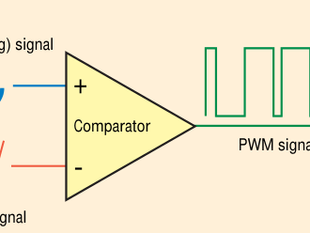Routray Lab

Reflections: A class of linear transforms
0
1
0
Reflections

Linear algebra is more than just numbers and equations; it’s a vital tool for understanding how we can transform shapes and data. A particularly interesting transformation is the reflection. Imagine looking into a mirror—what you see is a flipped version of yourself, yet the overall shape and size remain the same. This post explores reflections within linear transforms and the matrices that represent them. Understanding these concepts can greatly enhance your skills in various fields, such as computer graphics, physics, and data analysis.
Reflections allow us to manipulate geometric figures without altering their fundamental characteristics. Using matrices as a representation simplifies the process of applying these transformations in real-world applications. Let's dive deeper into what linear transforms are, how reflections work, and their practical significance.
What Are Linear Transforms?
Linear transformations are functions that map vectors from one space to another while maintaining the operations of vector addition and scalar multiplication. Simply put, a linear transformation changes a vector in specific ways—such as stretching or rotating—while keeping the overall structure.
For a transformation \( T: \mathbb{R}^n \rightarrow \mathbb{R}^m \), it adheres to two main properties:
Additivity: \( T(\mathbf{u} + \mathbf{v}) = T(\mathbf{u}) + T(\mathbf{v}) \) for any vectors \( \mathbf{u}, \mathbf{v} \).
Homogeneity: \( T(c \cdot \mathbf{v}) = c \cdot T(\mathbf{v}) \) for any vector \( \mathbf{v} \) and scalar \( c \).
These properties make linear transformations crucial not only in mathematics but also in practical applications. For example, in data analysis, linear transforms can help compress data, improve classification, and enhance visualizations.
The Importance of Matrices in Linear Transforms
Matrices are essential tools for representing linear transformations. By multiplying a vector by a matrix, you can easily apply complex transformations. For example, a basic 2D transformation can be expressed as:
\[
A = \begin{pmatrix}
a & b \\
c & d
\end{pmatrix}
\]
When this matrix acts on a vector \( \mathbf{v} \), it produces a transformed vector, which gives a clear representation of shape manipulation.
In fact, according to a study, up to 70% of contemporary computer graphics rely on matrix-based transformations, showcasing the significant role matrices play in modern technology.
Understanding Reflections
Reflecting diagrams across lines in 2D space can be envisioned as flipping shapes over an axis, akin to reflections in a mirror. Here's a detailed look at how reflections work:
Reflection Across the X-Axis
To reflect a point across the x-axis, we apply the matrix:
\[
R_x = \begin{pmatrix}
1 & 0 \\
0 & -1
\end{pmatrix}
\]
If we take a point (3, 4) and apply this matrix, the resulting point transforms to (3, -4). This simple reflection flips the point vertically.
Reflection Across the Y-Axis
For reflection across the y-axis, we use the matrix:
\[
R_y = \begin{pmatrix}
-1 & 0 \\
0 & 1
\end{pmatrix}
\]
When reflecting the point (3, 4), we get (-3, 4). The negative sign on the x-coordinate demonstrates the horizontal flip.
Reflection Across the Line \( y = x \)
Reflecting a point across the line \( y = x \) requires a different matrix:
\[
R_{y=x} = \begin{pmatrix}
0 & 1 \\
1 & 0
\end{pmatrix}
\]
For example, applying this to (3, 4) produces (4, 3), effectively swapping the coordinates of the vector.
Example:
Following is a simple code used to generate the above graph.
pPoint = [3,-2]';
% reflect about y=x;
pPoint01 = [0 1;1 0]*pPoint;
scatter(pPoint(1), pPoint(2),"filled");
text(pPoint(1)-0.8, pPoint(2),['(',num2str(pPoint(1)),', ', num2str(pPoint(2)),')'] )
hold on
scatter(pPoint01(1), pPoint01(2),"filled");
text(pPoint01(1)-0.8, pPoint01(2),['(',num2str(pPoint01(1)),', ', num2str(pPoint01(2)),')'] )
% reflect about y=x;
pPoint02 = [0 -1;-1 0]*pPoint01;
scatter(pPoint02(1), pPoint02(2),"filled");
text(pPoint02(1)+0.2, pPoint02(2),['(',num2str(pPoint02(1)),', ', num2str(pPoint02(2)),')'] )
pPoint03 = [0 -1;-1 0]*pPoint;
scatter(pPoint03(1), pPoint03(2),"filled");
text(pPoint03(1)-0.8, pPoint03(2),['(',num2str(pPoint03(1)),', ', num2str(pPoint03(2)),')'] )
xlabel('X [m]', 'Interpreter', 'latex', FontSize=18 );
ylabel('Y [m]', 'Interpreter', 'latex', FontSize=18 );
%%
hold on
plot(xlim,ylim)
plot(-xlim,ylim)
plot([xlim], [0 0])
plot([0 0], [ylim])
legend("Point-1","Point-1 reflected about y=x","Point-2 reflected about y=-x", ...
"Point-1 reflected about y=-x", "y=x", "y=-x")
set(gca, fontsize=18, fontname='Times')
ax = gca
ax.YAxis.Exponent = 0;
axis paddedPractical Applications of Reflections
Reflections extend beyond theoretical mathematics—they are applied in various fields:
Computer Graphics
In computer graphics, reflections are critical for developing realistic visuals. It contributes significantly to achieving visual effects such as glossy surfaces or rippling water reflections. Studies indicate that realistic rendering can improve user engagement by up to 30% in digital interfaces.
Image Processing
Reflections in image processing are commonly used. They can flip images to different orientations, essential for preparing training datasets in machine learning. For instance, augmenting a dataset with reflections can increase its size by up to 50%, which is crucial for improving model accuracy.
Physics
In physics, the principles of reflection play a role in wave behavior, including light and sound. For instance, understanding how light reflects off surfaces is vital for designing optical devices like cameras and lenses. As research shows, innovative designs can enhance resolution by as much as 40%.
Final Thoughts on Reflections
Reflections are a captivating aspect of linear transforms, effectively illustrated through matrices that simplify complex operations. Mastering these concepts is essential for students and professionals alike, paving the way for advancements in fields like mathematics, physics, and engineering.
Recognizing how reflections can be represented with matrices equips you with valuable skills for practical applications. Whether in computer graphics or physics, the ability to manipulate and reflect shapes opens new avenues for problem-solving and innovative design.
Embrace the transformative power of reflections as you continue your journey through linear algebra. Understanding these principles is not just an academic exercise but a key to unlocking creative potential in various disciplines.






